 W
WAbraham Lincoln is an 1869 oil-on-canvas painting by George Peter Alexander Healy of Abraham Lincoln, the 16th President of the United States.
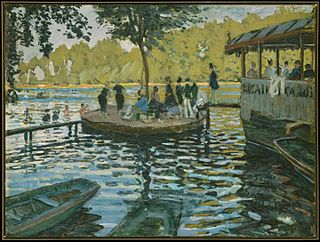 W
WBain à la Grenouillère is an 1869 painting by the French impressionist painter, Claude Monet.. It depicts "Flowerpot Island", also known as the Camembert, and the gangplank to La Grenouillère, a floating restaurant and boat-hire on the Seine at Croissy-sur-Seine. He was accompanied by Pierre-Auguste Renoir, who also painted the scene at the same time.
 W
WBashi-Bazouk is a painting by French artist Jean-Léon Gérôme. Done in oil on canvas, the painting depicts a Bashi-bazouk, an irregular soldier of the Ottoman Empire. The painting is currently on display at the Metropolitan Museum of Art.
 W
WThe Calm Sea is an 1869 painting by Gustave Courbet. Done in oil on canvas, the seascape depicts a beach on the Normandy coast stretched out before the English Channel. The painting is in the collection of the Metropolitan Museum of Art.
 W
WThe Folkestone Boat, Boulogne or Departure of the Folkestone Steamer is an 1869 painting by Édouard Manet, produced during one of his regular summer stays at Boulogne-sur-Mer. It shows a dawn scene with the steamship which regularly sailed between Boulogne and Folkestone – Manet and his family had embarked on it the previous year en route to London and the woman in white on the far left of the work is Suzanne Manet, accompanied by their son Léon. It is now in the Philadelphia Museum of Art.
 W
WThe Elder Sister is a painting by nineteenth-century French academic artist, William-Adolphe Bouguereau, in 1869. The painting was acquired in 1992 by the Museum of Fine Arts, Houston, as a gift. According to the museum website, the painting was the gift of an anonymous lady in memory of her father. Since then, The Elder Sister has been a part of the permanent collection of the museum and is placed in its "Arts of Europe" section. It has become one of the most notable highlights among the museum's collection of paintings.
 W
WThe Execution of Emperor Maximilian is a series of paintings by Édouard Manet from 1867 to 1869, depicting the execution by firing squad of Emperor Maximilian I of the short-lived Second Mexican Empire. Manet produced three large oil paintings, a smaller oil sketch and a lithograph of the same subject. All five works were brought together for an exhibition in London and Mannheim in 1992–1993 and at the Museum of Modern Art in New York in 2006.
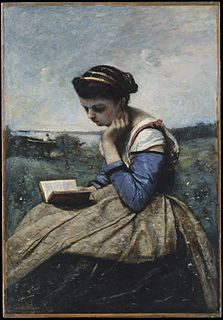 W
WFemme Lisant is a 1869 painting by French artist Jean-Baptiste-Camille Corot. The painting is now in the Metropolitan Museum of Art in New York City.
 W
WThe Funeral is an 1867–1870 oil on canvas painting by Édouard Manet, now in the Metropolitan Museum of Art in New York. Incomplete, its style is very close to that of Effect of Snow on Petit-Montrouge and The Exposition Universelle of 1867. It is also known as Burial at the Glacière, the title given to it in Denis Rouart and Daniel Wildenstein's posthumous inventory of Manet's works.
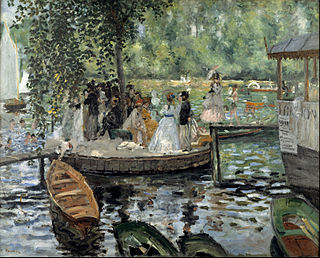 W
WLa Grenouillère is an 1869 oil on canvas painting by Pierre-Auguste Renoir, now in the Nationalmuseum in Stockholm. It shows the 'camembert', a small island planted with a single tree, linked by gangplanks to the Île de la Grenouillère and to the fashionable La Grenouillère floating restaurant and boat-hire at Croissy-sur-Seine near Bougival.
 W
WInterior, also known as The Rape, is an oil painting on canvas by Edgar Degas (1834–1917), painted in 1868–1869. Described as "the most puzzling of Degas's major works", it depicts a tense confrontation by lamplight between a man and a partially undressed woman. The theatrical character of the scene has led art historians to seek a literary source for the composition, but none of the sources proposed has met with universal acceptance. Even the painting's title is uncertain; acquaintances of the artist referred to it either as Le Viol or Intérieur, and it was under the latter title that Degas exhibited it for the first time in 1905. The painting is housed in the Philadelphia Museum of Art.
 W
WThe Knitting Girl is a painting by nineteenth-century French artist William-Adolphe Bouguereau in 1869. The painting is currently held in the Joslyn Art Museum in Omaha, Nebraska in the United States.
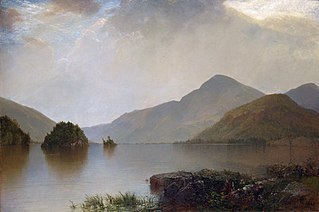 W
WLake George is a mid 19th century painting by American artist John Frederick Kensett. Done in oil on canvas, the painting depicts Lake George in upstate New York. The painting is in the collection of the Metropolitan Museum of Art.
 W
WMount Hood is an 1869 painting by Albert Bierstadt, and part of the collection of the Portland Art Museum in Portland, Oregon, in the United States. It portrays a view of the mountain in Oregon with the same name.
 W
WA Nymph by a Stream is an oil painting of 1869–70 by Pierre-Auguste Renoir which is held in the collection of the National Gallery, London. The painting portrays Renoir's 21-year-old model and lover, Lise Tréhot, who featured in over twenty of his paintings during the years 1866 to 1872.
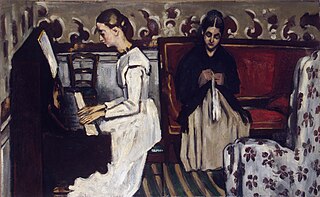 W
WThe Overture to Tannhäuser is an 1869 oil on canvas painting by Paul Cézanne, now in the Hermitage Museum. It comes from the Moscow collection of Ivan Morozov. The painting shows Cézanne's sisters at their home near Aix-en-Provence. Its title refers to the work played by the pianist on the left, the overture to the Wagner opera Tannhäuser.
 W
WThe Pipe of Freedom is an 1869 oil painting by Thomas Stuart Smith, depicting a black man lighting a pipe. The Royal Academy of Arts declined to include it in their 1869 exhibition, but Smith exhibited it with other rejected works nearby. Smith died on 31 December 1869, and bequeathed the painting to the Stirling Smith Art Gallery and Museum, the art gallery that he had founded in Stirling.
 W
WPortrait of Paul Chenavard is an 1869 oil on canvas portrait by Gustave Courbet, showing his friend and fellow artist Paul Chenavard aged 62. It was probably produced in Munich during Chenavard's exhibition of The Divine Tragedy, which he had produced for the Panthéon but which had hit difficulties. The portrait is now in the musée des Beaux-Arts de Lyon.
 W
WScène d'été, or Summer Scene, is an oil on canvas painting by Frédéric Bazille, completed in 1869, a year before his death in 1870, and now in the Fogg Art Museum in Cambridge, Massachusetts. The impressionist painting depicts young men dressed in swimsuits having a leisurely day along the banks of Lez river near Montpellier. Bazille achieved the look he wanted for the painting by first drawing the human figures in his Paris studio and then transporting the drawings to the outdoor setting. Like his earlier painting Réunion de famille (1850), Scène d'été captured friends and family members in the outdoors and was exhibited at the Paris Salon in 1870.
 W
WUnion of Lublin is an oil painting by the Polish artist Jan Matejko, finished in 1869, depicting the Union of Lublin. It is owned by the National Museum, Warsaw. and displayed at Lublin Museum.
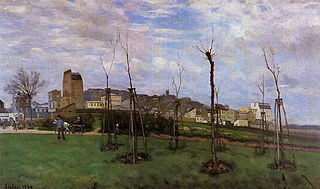 W
WView of Montmartre from Cité des Fleurs to Les Batignolles is a painting by Alfred Sisley, produced in spring 1869 and now in the Musée de Grenoble, France Inv. MG 1317). It was given to that museum in 1901 by the artist's friend and fellow painter Joseph-Auguste Rousselin, only two years after Sisley's death. It is one of the first Impressionist paintings to depict Montmartre, showing it as a still rural area.
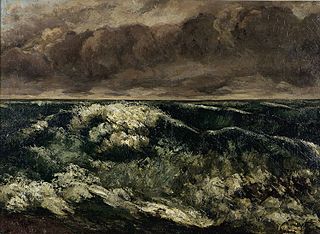 W
WThe Wave or The Waves is the title given to several seascapes painted between 1869 and 1870 by the French painter Gustave Courbet.